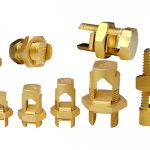We are more dependent on electronic equipment and tools than ever before. From the simple toaster to the much more complicated supercomputer, electronics rule our world. One of its silent components is the power cable.
Connecting the Electrical Wires to power sources and each other, the power cable is the building block of our very electronic world. Although the essential anatomy of a power cable may have remained more or less the same, power cable manufacturers are today focusing on building cables that have better signal strengths while increasing resistance to heat, moisture, and other environmental factors.
Better insulating materials and innovative designs have made this possible. Just as there are many kinds of equipment, there are also many kinds of cables. The variation in design is important to accommodate the unique power requirements of different equipment.
Twisted Pair Cable
As the name suggests, twisted-pair cables carry two conductors that are twisted together. It is one of the earliest cable formations, invented by Alexander Graham Bell. The twisting of the cable counteracts the electromagnetic interference in the environment.
Twisted-pair cables usually carry a number of pairs. In a larger bunch, the twist rate (twists per meter) may remain the same, but in a smaller bunch, the twist rates of adjacent pairs will differ.
Broadly speaking, there are two types of twisted pair cables: Unshielded twisted pair cable and shielded pair cable.
Unshielded twisted pair cable: These are commonly found in computer and telephone networks. Different cable bundles are often bundled together in telephone networks.
Twist rates are kept at different lengths in smaller bundles. UTP is now also being increasingly seen in computer networks, TV signals and security video installations.
Shielded twisted pair cable: The shielding of the cable makes it resistant to electromagnetic interference. It offers all the advantages of twisted-pair cable while reducing disturbances in the environment.
Also Read: The Ultimate Guide to V4 Submersible Pumpsets
Coaxial Cable
This cable has a copper conductor at its core. An insulating plastic layer surrounds this. A woven copper shield is present around it, and the final layer is a plastic sheath.
When compared to twisted pair, it is less susceptible to signal interference and more conducive to carry signals over long distances. There are two types of coaxial cables: thick coaxial and thin coaxial. Thin coaxial is also known as thinnet, while thick coaxial is also known as thicknet.
Fiber Optic Cable
The core of the fiber optic cable is made of glass or plastic fibers. There is a plastic coating that cushions this. Around this are Kevlar fibers. The outer jacket is made of PVC or Teflon.
Power cable manufacturers use the Kevlar fibers to give the cable additional strength, protecting it from any cracks or breakage. What makes the fiber optic cable unique is that instead of transmitting electronic signals, it transmits light.
This makes it less susceptible to electrical interference. This is why it is often used in places of high electrical activity and emanating signals. It has other advantages over both twisted and coaxial cables.
Also Read: How Multicore Flexible Cable Manufacturers Maintain Quality Control?
It carries signals at lightning speed, making it ideal for communication networks. The fiber optic core also makes it resistant to lighting and moisture. This makes it ideal for outdoor use.
It can also carry signals across long distances, much more than the previous two types. Together, these qualities make fiber optic cables essential to many modern cities, connecting networks across cityscapes. On the flip side, fiber-optic cables are also more difficult to install and modify.
There are two types of fiber-optic cables: single-mode and multi-mode. The multimode is thicker with a larger diameter. Over a vast distance, a single mode will work better.
Flat Cable
This one gets its name simply because of its shape. Here, the core wires are not bunched together. Instead, the conductors run parallel to each other. It has many advantages over the commonly seen round cables.
The parallel-running conductors ensure that the cable is less susceptible to overheating. It is also more flexible and easy to install. The parallel conductors allow simultaneous transmission of multiple signals.
Also Read: Submersible Pump vs. Compressor Pump
Conclusion
Today, power cable manufacturers offer specialty cables depending on the equipment, environment, and distance covered. Hence, it is important to understand the different types of power cables and their functions.



